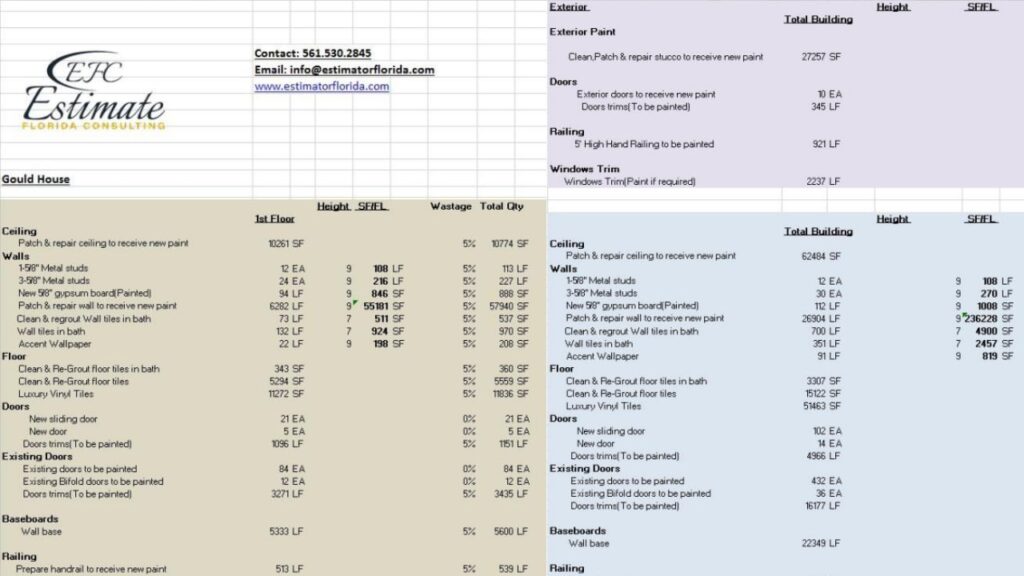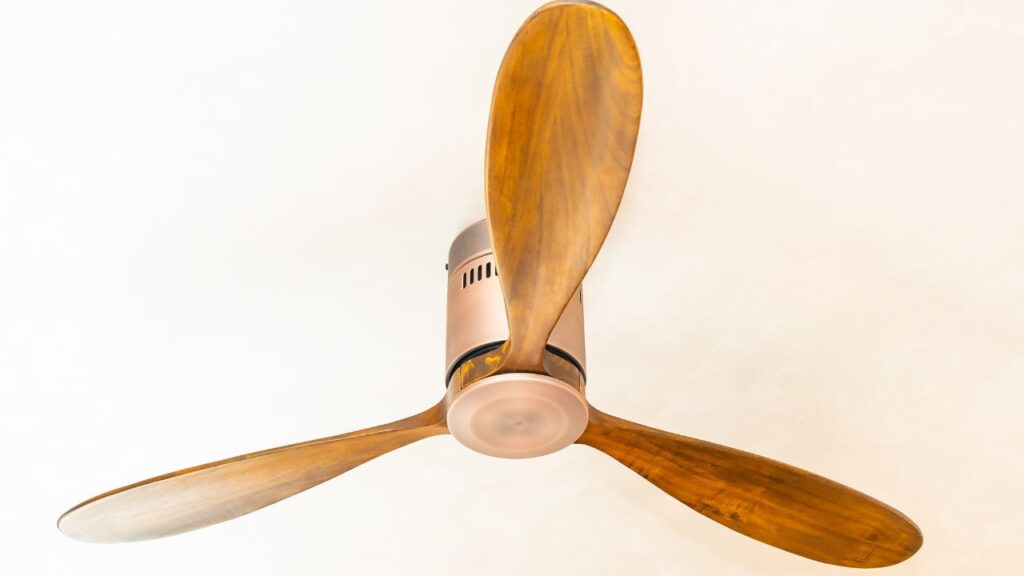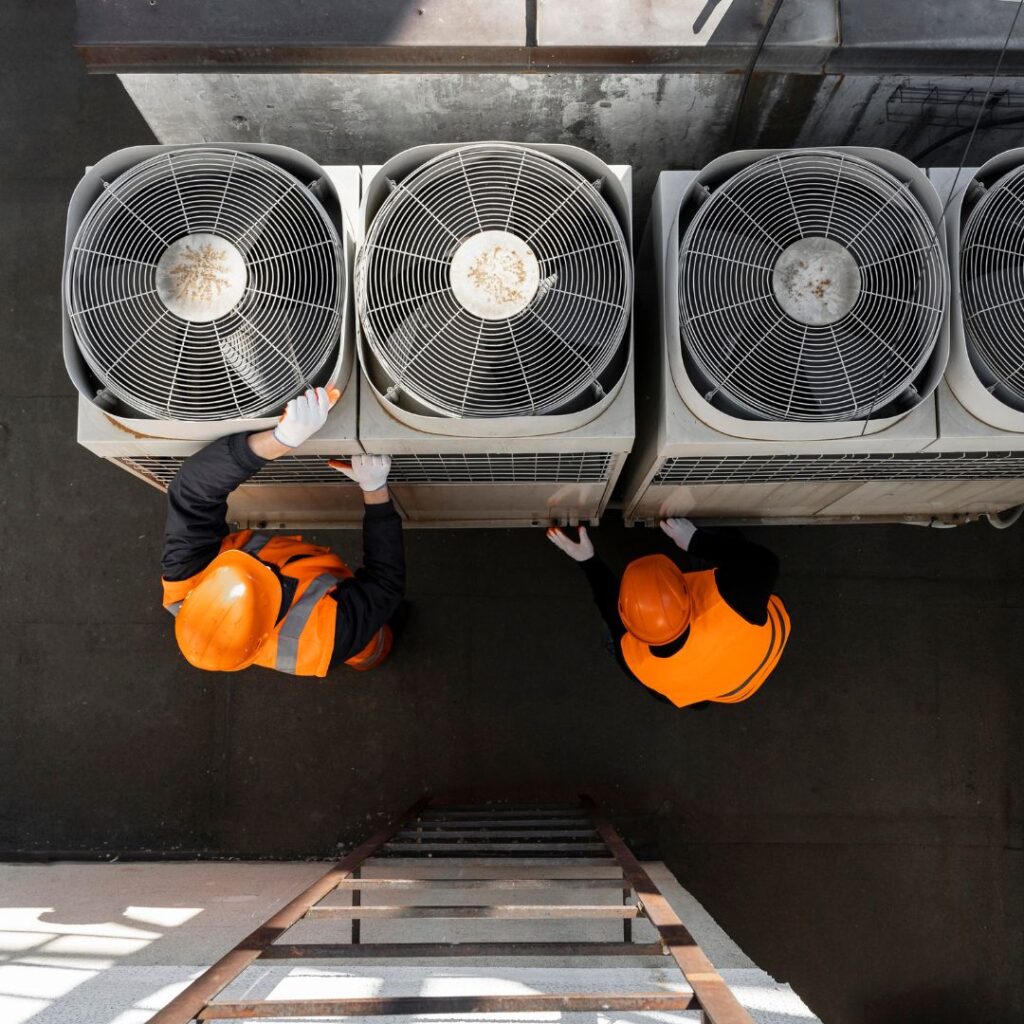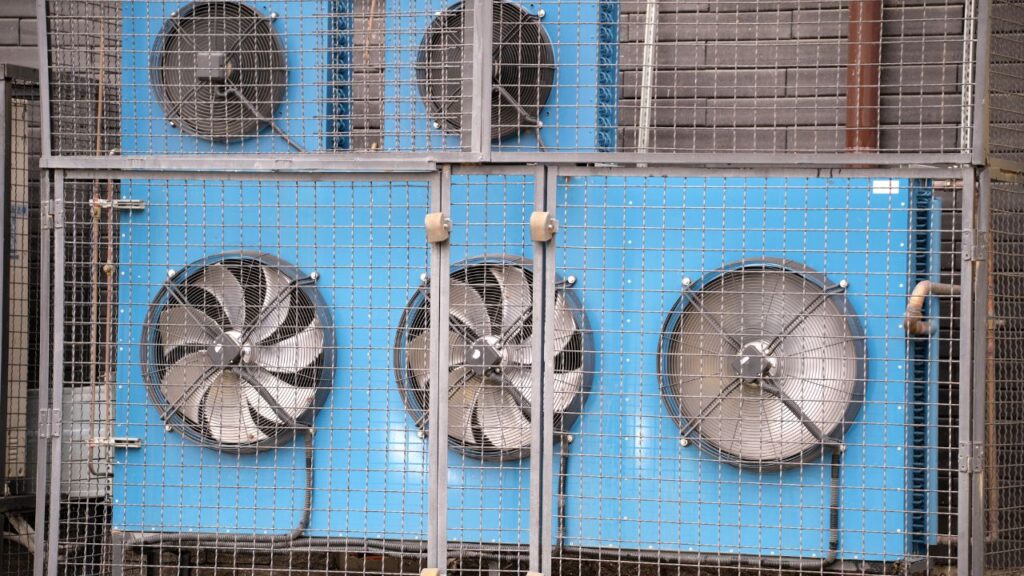A Wining Cost Estimate
That Helps You To Win More Electrical Construction Projects

To estimate the cost of installing ceiling fans and exhaust fans efficiently, this guide on ceiling fans provides you with a comprehensive understanding of different types of ceiling fans, factors affecting the installation cost, and the average cost of installing ceiling fans. This way, you can make an informed decision on the installation of your ceiling fans.

Ceiling fans come in many types for different users. Here are the main ones and their features:
Type of Ceiling Fan | Description |
|---|---|
Standard Ceiling Fan | Fixed mounting, min 7ft clearance, styles |
Low Profile Ceiling Fan | For ceilings < 8ft, flush mount |
Dual Motor Ceiling Fan | Two motors with blades that move separately |
Outdoor Ceiling Fan | For outdoor spaces, weather-proof motor & blades |
Chandelier Ceiling Fan | Elegant design with chandelier & fan in one |
Other features include remote control, lighting, and energy-saving. Things to consider when choosing a fan are: blade span, motor power, airflow efficiency, and noise level.
Pro Tip: Hire a professional electrician to avoid risk & damage. Installation costs don’t increase with bad decisions.

The cost of installing a ceiling fan is determined by several variables. These are: type of fan, outlet location, electrical work and accessories. They all impact the final cost. Other factors that may affect the price are: ceiling slope, permits, and structural support.
The following table shows the details of variables that determine the cost of installing a ceiling fan.
Variable | Description |
|---|---|
Type of fan | Standard or decorative |
Outlet location | Close to existing wiring or new installation |
Electrical work | Existing wiring sufficient or extra work |
Accessories | Ceiling height, remote control, lighting |
Ceiling fans were invented in the US during the Industrial Revolution. They were initially used in factories. Then, in 1882, Philip Diehl designed an electric fan for home use. It quickly gained popularity and is now a common household item.
Installing ceiling fans can be expensive, but it’s worth the price to feel a nice breeze, instead of heat.
When it comes to ceiling fan installation, the cost depends on the type of fan, location, and complexity. There is no fixed price.
To get an idea of the average cost, here’s a table with 3 columns: ‘Location’, ‘Type of Fan’, and ‘Average Cost’.
Location | Type of Fan | Average Cost |
|---|---|---|
Bedroom | Basic | $60-$150 |
Living Room | Energy Efficient | $200-$500 |
Outdoor | Premium | $600-$1,000 |

Other factors, such as electrical work, could also affect the bill. To save money, some homeowners try DIY installation. However, this may lead to mistakes and safety issues.
One homeowner learned this the hard way. After several failed attempts, he realized he needed professional help. He ended up spending more money correcting his mistakes than if he’d hired an expert from the start. Why not just enjoy the breeze and save money?
To estimate the cost of installing exhaust fans, you need to take into account the different types of exhaust fans available, factors that can impact the installation cost, and the average cost of installing exhaust fans. By understanding these sub-sections, you can estimate the cost of exhaust fan installation with ease.
There are various exhaust fan types out there in the market. In our comprehensive list, you can find the type, application, and advantages for each. Duct mounted fans are good for large areas like warehouses. Kitchen hood fans absorb cooking grease. And, inline fans provide space-saving.
A recent study showed that investing in a high-quality exhaust fan can reduce indoor air pollutants by half. Having an exhaust fan is like having a baby – loud, messy, and pricey.

Installing exhaust fans can vary in cost. It depends on size of the space, type and quality of fan, the labor and electrical/structural modifications.
Look at this table to understand:
Variable | Impact |
|---|---|
Space size | More/powerful fans may be needed |
Fan type/quality | Higher end models may have more complex install needs |
Labor cost | Skilled professionals may charge more |
Structural/Electrical modifications | May be required for safe install |
Every install project is unique, depending on the situation. High ceilings may need additional scaffolding or lifts.
HomeAdvisor states the average cost to install an exhaust fan is $200-$800 depending on location and job. But, why install an exhaust fan when you can open a window and money flies out?
Calculating the installation cost of an exhaust fan can be tricky. To help, we’ve compiled data on average costs. The table below provides an overview.
Installation Type | Average Cost | Caveats |
|---|---|---|
Wall Exhaust Fan | $200 – $600 | Can be hard to install without help. |
Ceiling Exhaust Fan | $150 – $300 | Might need extra wiring. |
Window Exhaust Fan | $50 – $250 | Cheapest, but may not vent enough. |

Remember, these are just averages. Actual costs may vary depending on location and needs.
Other things to consider:
Weigh all options and choose what fits best with your needs and budget.
To calculate the cost of installing ceiling fans and exhaust fans, you need to determine the number of fans required, cost of necessary equipment and materials, as well as labor costs and permit fees. These sub-sections provide solutions to obtaining an accurate estimate for your installation project.
To work out the number of fans needed, it’s essential to consider some factors. Room size, ceiling height, ventilation area and occupancy level are key variables. Fan producers provide guidelines based on room measurements. But calculating the ventilation area per fan gives a more precise estimate.
We can make a table that helps decide the number of fans using variables such as room size, ceiling height, recommended air changes per hour for occupancy level and ventilation area per fan. By multiplying all these figures, we can calculate how many fans we need for an effective system.
Remember to factor in extra non-occupancy sources, like electronics and heat gain from windows. We must include their estimated heat dissipation in our calculations to work out the total cooling load.
Pro Tip: Round up the final amount. Not enough ventilation leads to poor indoor air quality and mould growth.

The total expenses to buy the equipment and materials for installation? That’s an important factor to consider. Cost changes depending on kind, quantity, and quality of products needed.
An organized table is key for calculating installation costs. With true data, columns like product name, quantity, unit price, and total cost can help compute and estimate future costs.
Every installation project needs unique equipment and materials to determine expenses. Knowing these requirements assists in estimating the amount for the project.
Companies now have complex software to guarantee accurate calculations. This method helps forecast budgets for any installation job.
Labor costs and permit fees? These are the only numbers that won’t lie. But that won’t make you feel any better about the bill.
Considering the costs of installing systems and equipment is essential. Significant factors to think about are labor and permit fees. These include payments to professionals and fees from regulatory bodies.
Check out this table:
Type of Fee | Cost Range |
|---|---|
Labor Fees (Per Day) | $300 – $800 |
Permit Fees | $50 – $500 |

These fees may vary based on location, complexity and type of equipment. Companies need to research and budget.
Other expenses to factor in are materials, transportation and taxes.
In a case study, solar panel installation cost around $25,000. Labor and permit costs were 20%. Negotiating material prices helped reduce this cost.
Calculating installation costs can be complex, but understanding expenses can help organizations budget and make informed decisions.
Maximize your electrical construction business’s potential with our competitive financing options

To weigh the options between hiring a professional and doing it yourself, we’ve got you covered in “Hiring a Professional vs. DIY”. The key sub-sections, “Pros and Cons of Hiring a Professional” and “Pros and Cons of DIY” will help determine which method is the best solution for estimating the cost of installing ceiling fans and exhaust fans.
Pros or Cons? Professional Assistance or DIY Approach?
When it comes to achieving goals, two options are available. Let’s talk about the advantages and disadvantages of hiring a professional.
Pros:
Cons:
Hiring professionals can be very beneficial, yet bear in mind certain unique requirements. Consider the following advice:
This way, you will build trust between parties and ensure your goals are achieved. DIY? A great way to learn new stuff and an excellent excuse when things don’t work out!

Weighing up the benefits and drawbacks of a DIY project? Here’s what you need to think about:
Before deciding to go ahead, consider the complexity of the task. Some projects may need special equipment or materials – leave these for the pros.
If you choose to attempt the task yourself, make sure you research thoroughly. That means identifying potential problems and getting the right resources, tools, materials and safety equipment.
Remember, it’s not just about saving money or time. It’s also about avoiding the urge to flip out and throw power tools!
Deciding to install ceiling and exhaust fans requires understanding the cost estimation process. By following a step-by-step guide, you can get an accurate cost estimate. This helps you make informed decisions and plan your budget.
First, assess existing electrical infrastructure and determine any wiring or circuit breaker needs. Also, identify fan size & type, and any accessories like switches and dimmers.
Remember, various factors affect the cost: labor fees, product quality, and extra expenses. A detailed estimate prevents unexpected expenses. Each cost estimation will differ, based on the project’s specific needs.
To estimate the cost of installing ceiling fans and exhaust fans, you need to first decide on the type of fans you want installed, the number of fans needed and the scope of the project. You can also get quotes from professional installers to get an accurate estimate.
The cost of installing ceiling fans and exhaust fans can be affected by factors like the type and quality of the fans, the complexity of the installation process, the size of the space, and the hourly rates charged by the installer.
Installing ceiling fans and exhaust fans can be a complex process and may require electrical skills and knowledge that most homeowners don’t possess. It is recommended that you hire a licensed electrician to do the installation for you.
There are several safety hazards that need to be considered when installing ceiling fans and exhaust fans, including electrical shock, falling from ladders, and injury from the fan blades. Always make sure to follow the manufacturer’s instructions and hire a professional installer if you’re not confident in your skills.
The length of time it takes to install ceiling fans and exhaust fans varies depending on the complexity of the project and the number of fans being installed. It can take anywhere from a few hours to a day or two to complete the job.
Installing ceiling fans and exhaust fans can have several benefits, including improving ventilation and air circulation, reducing energy costs, and enhancing indoor comfort levels by reducing humidity and odors.
Here I am going to share some steps to get your electrical construction cost estimate report.
You can send us your plan on info@estimatorflorida.com
Before starting your project, we send you a quote for your service. That quote will have detailed information about your project. Here you will get information about the size, difficulty, complexity and bid date when determining pricing.
We do electrical construction cost estimating and prepare a detailed report for your project. At last, you finalize the report and finish the project.
561-530-2845
info@estimatorflorida.com
Address
5245 Wiles Rd Apt 3-102 St. Pete Beach, FL 33073 United States
561-530-2845
info@estimatorflorida.com
Address
5245 Wiles Rd Apt 3-102 St. Pete Beach, FL 33073 United States
All copyright © Reserved | Designed By V Marketing Media | Disclaimer
IMPORTANT: Make sure the email and cell phone number you enter are correct. We will email and text you a link to get started.
By clicking “I Agree” above you give Estimate Florida Consultin express written consent to deliver or cause to be delivered calls and messages to you by email, telephone, pre-recorded message, autodialer, and text. Message and data rates may apply. You are able to opt-out at any time. You can text STOP to cancel future text messages.